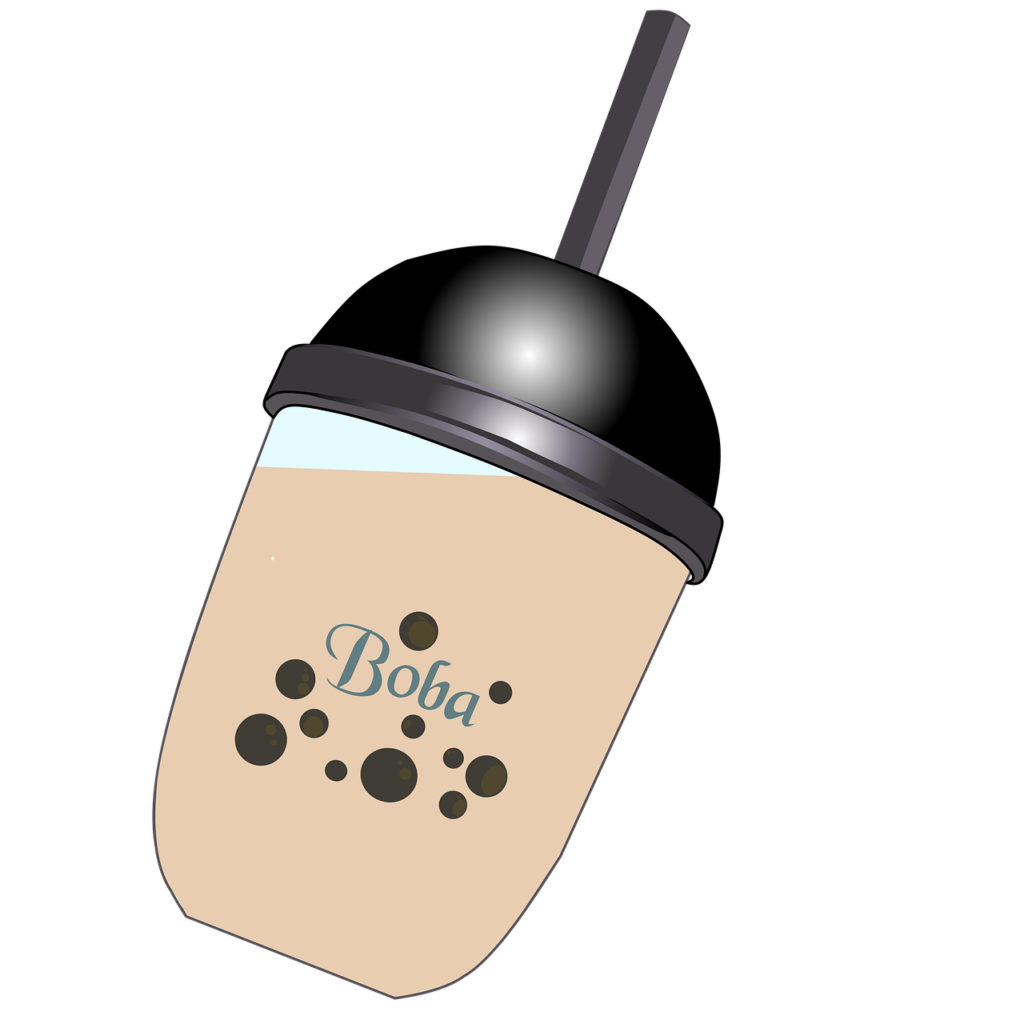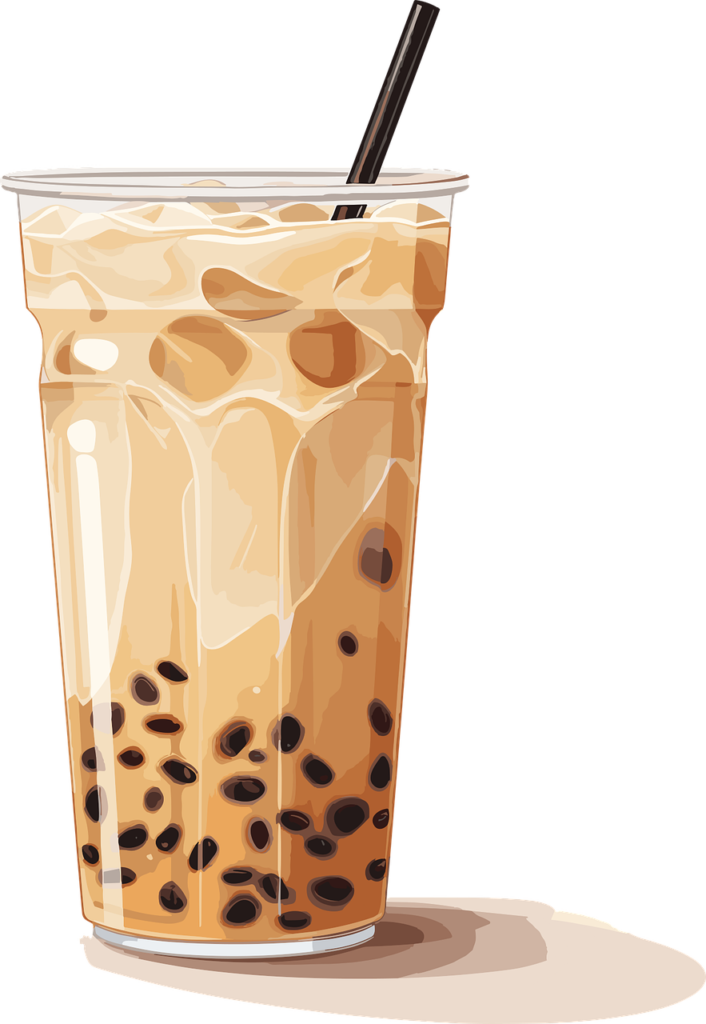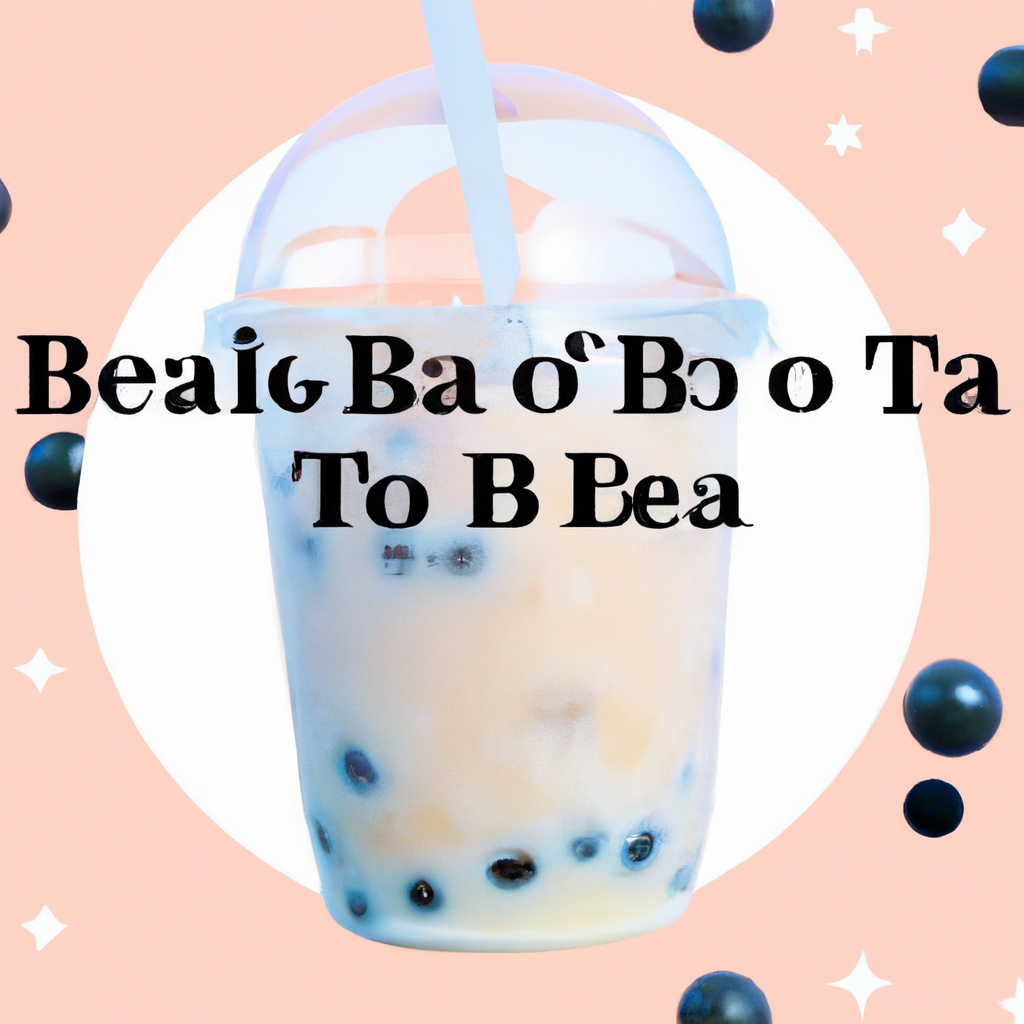Sipping Your Way to Happiness with Boba
Step into a world of pure delight as we unveil the secrets of a delectable beverage that has taken the world by storm – boba! From its humble origins in Taiwan to its widespread popularity across the globe, this little ball of tapioca goodness has captured the hearts and taste buds of millions. Join us on a journey as we dive into the fascinating history, tantalizing flavors, and sheer joy that can be found in every sip of boba. Prepare to embark on a captivating adventure that will leave you craving for more!
What is Boba?
Boba, also known as bubble tea, is a delicious and refreshing beverage that has captured the hearts of people all over the world. It originated in Taiwan in the 1980s and has since gained popularity globally. Boba is a combination of tea, milk (or other non-dairy alternatives), flavored syrups, and tapioca pearls. It is commonly served cold, with ice and a wide, sturdy straw that allows you to enjoy the chewy tapioca pearls as you sip.
Origin of Boba
Boba was first created in Taiwan by a small tea stand owner who wanted to add a twist to the traditional milk tea. He decided to combine his brewed tea with fruit syrups and tapioca pearls, creating the iconic drink we know today as boba. The concept quickly caught on and spread throughout Taiwan, eventually making its way to other Asian countries, and then the rest of the world.

This image is property of pixabay.com.
What is Boba made of?
Boba is made primarily from four main ingredients:
- Tea: Usually black tea, green tea, or a blend of both, the choice of tea can greatly influence the flavor of the final drink.
- Milk: Most traditional versions of boba use dairy milk, but non-dairy alternatives like almond milk, soy milk, and oat milk are also popular options.
- Flavored Syrups: These are responsible for giving boba its unique taste. Popular flavors include taro, matcha, fruit flavors like strawberry, mango, and lychee, as well as classic options like chocolate and caramel.
- Tapioca Pearls: These chewy, gummy-like pearls are made from tapioca starch, a gluten-free starch derived from the cassava root. Tapioca pearls are cooked until soft and then soaked in a sugar syrup, giving them a subtle sweetness.
The Rising Popularity of Boba
Boba’s Global Reach
What started as a local Taiwanese beverage has now become a global phenomenon. Boba shops can be found in major cities all over the world, from bustling Asian metropolises to trendy corners of the United States and Europe. The accessibility of boba has played a significant role in its rising popularity, as people from different cultures and backgrounds have embraced this unique drink.
Boba as a Trendy Beverage
In recent years, boba has gained immense popularity as a trendy beverage. Its colorful appearance, Instagram-worthy aesthetic, and unique flavor combinations have made it a hit among young people and social media influencers. Boba has become a symbol of modern and youthful culture, with many boba shops incorporating trendy designs and vibrant decor to enhance the overall experience.
Boba in Social Media
The popularity of boba has skyrocketed with the rise of social media. Platforms like Instagram and TikTok are filled with users showcasing their favorite boba drinks, experimenting with new flavors, and even creating elaborate DIY boba recipes. The visual appeal of the drink, coupled with its inherent trendiness, has made it a favorite topic of conversation and an opportunity for self-expression in the digital world.

This image is property of pixabay.com.
The Boba Experience
The Variety of Boba Flavors
One of the most appealing aspects of boba is the wide range of flavors available. From traditional options like jasmine milk tea and black milk tea to more adventurous combinations like taro matcha or mango passionfruit, there is a flavor to suit every taste preference. Boba enthusiasts can explore different flavors and find their favorites, making each boba experience unique and exciting.
The Textures in Boba
Boba is not just about the flavors; it’s also about the textures. The chewiness of the tapioca pearls perfectly complements the smoothness of the tea and milk mixture. Taking a sip of boba gives you a delightful combination of textures in your mouth, creating a fun and enjoyable experience with every sip.
The Fun Factor of Boba
There’s an undeniable sense of fun associated with drinking boba. From the moment you choose your flavor and watch as the pearls are added to your drink, to the satisfying sensation of sipping it through a wide straw, boba offers a playful and interactive experience. It’s a treat that brings joy and excitement with every visit to a boba shop.
The Art of Boba Making
Behind every delicious cup of boba is a skilled boba maker. The process of making boba requires precision and technique, from brewing the perfect tea to carefully cooking the tapioca pearls. The artistry involved in creating the ideal balance of flavors and textures is what sets apart a remarkable boba drink. Many boba enthusiasts appreciate and admire the craftsmanship that goes into every cup.
Boba and Happiness
The Psychological Effects of Boba
Boba has been known to have a positive impact on people’s mood and overall well-being. The act of enjoying a cup of boba can evoke feelings of happiness and contentment, providing a momentary escape from the stresses of daily life. The combination of delicious flavors, unique textures, and the aesthetically pleasing nature of the drink contribute to a sense of joy and satisfaction.
Boba as a Stress Reliever
Boba can act as a stress reliever, offering a comforting and soothing effect on the mind and body. The act of sipping a warm or cold cup of boba can help people unwind and relax, providing a much-needed break during a hectic day. The simple pleasure of enjoying a favorite boba flavor can help alleviate stress and promote a sense of calm.
Boba as a Mood Booster
The vibrant colors and flavors of boba can have a direct impact on one’s mood. The experience of savoring a visually appealing and delicious drink can elevate spirits and enhance positive emotions. Boba’s role in boosting mood is not only a result of its taste but also the associations and memories it may evoke.
Boba and the Power of Nostalgia
For many individuals, boba holds a special place in their hearts as a nostalgic beverage. Memories of childhood or past experiences associated with boba can trigger a sense of nostalgia, bringing back feelings of happiness and comfort. The connection between boba and nostalgia can further enhance the positive emotional effects it has on individuals.

This image is property of pixabay.com.
Boba and Social Connections
Boba as a Social Catalyst
Boba has become a social catalyst, bringing people together through shared experiences. It has become a popular choice for socializing, whether it’s meeting friends for a boba date or gathering at a boba shop to catch up with loved ones. Boba acts as a common ground that bridges conversations and creates opportunities for connection.
Boba Shops as Community Spaces
Boba shops have evolved into more than just places to grab a drink; they have become community spaces. Boba shops often provide a comfortable and welcoming environment for people to socialize, study, or simply relax. They offer a sense of belonging and have become a hub for like-minded individuals who share a love for boba.
Boba and Friendships
Boba has the power to strengthen friendships and create lasting memories. Whether it’s trying different flavors together, sharing recommendations, or simply enjoying a boba outing, the shared experience of enjoying boba can deepen connections and foster a sense of camaraderie.
Boba and Self-Care
Boba as a Personal Treat
Treating oneself to a cup of boba can be seen as an act of self-care. It’s a way to indulge and reward oneself for accomplishments, big or small. Taking a moment to enjoy a favorite boba flavor can serve as a reminder to prioritize self-care and to take time to appreciate the little joys in life.
Boba as a Self-Indulgence
Boba can be seen as an indulgence, a special treat that brings pleasure and delight. Whether it’s a decadent boba milkshake or a refreshing fruit tea, the act of indulging in a well-crafted boba drink can provide a momentary escape from the demands of everyday life.
Making Boba at Home
For those who enjoy the process of creating their own treats, making boba at home can be a fulfilling and rewarding experience. With readily available boba kits and recipes online, individuals can experiment and personalize their boba creations according to their preferences. Making boba at home can be a form of self-care and a way to bring the boba experience into one’s own kitchen.

Health Considerations with Boba
Caloric Content in Boba
It’s important to be mindful of the caloric content in boba, as some variations can be high in calories. The inclusion of milk or flavored syrups can contribute to the overall calorie count of the drink. Opting for lower-calorie alternatives, such as using non-dairy milk or reducing the amount of sweetener, can help make boba a healthier choice.
Sugar Content in Boba
Boba drinks often contain sugar, both from the syrups and the tapioca pearls. It’s essential to be aware of the sugar content and consider moderation when consuming boba regularly. Some boba shops offer options with reduced sugar or sugar alternatives for those who are more health-conscious.
Adjusting Boba to Dietary Needs
Fortunately, boba can be customized to fit different dietary needs and preferences. Whether you’re looking for gluten-free options, vegan alternatives, or low-sugar variations, many boba shops offer menu options that cater to specific dietary restrictions. Communicating your preferences and needs to the boba shop staff can help ensure that you can enjoy a customized and suitable beverage.
Alternatives to Traditional Boba
For those who are looking for healthier alternatives or want to explore different options, there are variations of boba available that reduce the caloric and sugar content. Some alternatives include fruit teas, herbal infusions, or using healthier sweeteners like honey or stevia. These alternatives provide options for individuals who are conscious about their health while still wanting to enjoy the boba experience.
The Future of Boba Culture
Innovation in Boba Flavors
As boba continues to gain popularity, the industry is seeing continuous innovation and experimentation in flavors. Boba shops are constantly creating new and exciting combinations to keep up with consumer demands and to offer unique experiences. From exotic fruit flavors to unexpected savory twists, the future of boba brings endless possibilities.
Sustainability in Boba Industry
With the growing concern for sustainability, the boba industry is also making changes to reduce its environmental impact. Many boba shops are adopting eco-friendly practices such as using biodegradable or reusable straws, sourcing local and organic ingredients, and implementing recycling programs. The focus on sustainability ensures that the boba culture can continue to thrive while being mindful of the planet.
Boba’s Integration into Mainstream Culture
Boba has already made significant strides in becoming a part of mainstream culture. It has become a recognizable and beloved beverage that transcends cultural boundaries. With its rising popularity, it’s likely that boba will continue to be integrated into the fabric of global society, becoming a staple in cafes, restaurants, and even household kitchens.

Boba and Cultural Identity
Boba and Asian Identity
Boba plays an integral role in Asian identity and culture. It originated in Taiwan and quickly spread across Asia, becoming deeply embedded in the culinary traditions of many Asian countries. For Asian individuals and communities, boba represents a connection to their heritage and serves as a cultural symbol.
Boba’s Influence on Other Cuisine
The influence of boba has extended beyond Asian cuisine and has made its mark on other culinary traditions. Boba’s popularity has led to its integration into various dishes and desserts, creating innovative new flavors and unique culinary experiences. This cross-cultural exchange highlights the adaptability and appeal of boba in different gastronomic contexts.
Boba and Cultural Appreciation
As the boba culture continues to grow and gain recognition globally, it’s important to appreciate and respect the cultural origins and significance of boba. Enjoying and celebrating boba can be an opportunity for cultural appreciation, fostering intercultural understanding and promoting diversity.
The Global Boba Phenomenon
Boba in Different Countries
Boba has made its mark in various countries around the world, adapting to local tastes and preferences. In the United States, boba has become increasingly popular, with numerous boba shops opening in major cities. In countries like Australia, Canada, and the United Kingdom, boba culture has also thrived, attracting a diverse range of customers.
Boba’s Impact on Tourism
Boba has become a unique attraction for tourists visiting countries where it is popular. Travelers seek out authentic boba shops and flavors, allowing them to experience the local culture and indulge in the regional boba scene. Boba has become a must-try for adventurous tourists looking to immerse themselves in the vibrant food and beverage culture of a foreign land.
Boba’s Representation in Media
Boba has gained visibility and representation in various forms of media, including movies, TV shows, and music videos. Its inclusion in mainstream media has further contributed to its popularity and appeal. Boba is often portrayed as a trendy and cool beverage, solidifying its status as an iconic drink of the modern era.
In conclusion, boba embodies more than just a drink. It represents a global phenomenon driven by its unique flavors, textures, and the overall experience it offers. Boba has taken the world by storm, captivating millions of people and creating connections across cultures and generations. From its humble origins in Taiwan to its current status as a worldwide sensation, boba continues to evolve and shape the way we perceive and enjoy beverages. So the next time you sip on this delightful beverage, remember that boba is not merely a drink – it’s a source of happiness, a catalyst for social connections, and a celebration of cultural diversity. Cheers to the beautiful world of boba!

